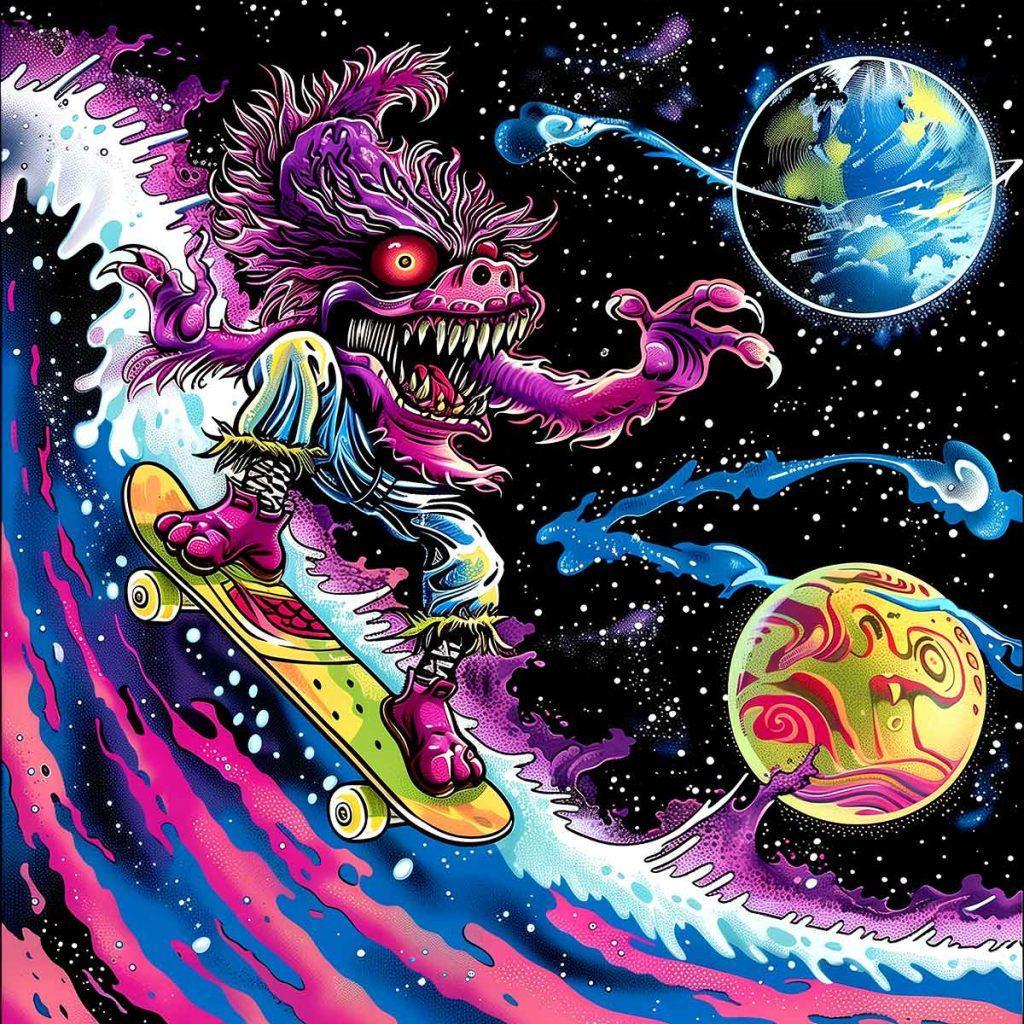
Skateboard Wall Art
Skateboard Wall Art – Skateboard art has long been an integral part of skateboard culture, reflecting the creativity, rebellious spirit, and individuality of skaters worldwide. Let’s dive into the rich history of skateboard art:
Skateboard Art, The Early Days:
Skateboard art emerged as an essential component of skate culture during the late 1950s and early 1960s, deeply intertwined with the vibrant surf scene flourishing along the California coast. Initially, skateboard decks were simple and unadorned, echoing the minimalistic aesthetic of their surfboard counterparts. However, this changed rapidly as artistic individuals within the skating community began to infuse their boards with personalized designs, ushering in a new era of creativity and self-expression.
1970s Skateboard Boom:
The 1970s witnessed a monumental rise in the popularity of skateboarding, marking a pivotal era in the sport’s history. This surge in interest propelled skateboarding into the mainstream consciousness, laying the foundation for the development of iconic brands and the flourishing of skateboard art. Notably, the decade saw the emergence of influential artists who left an indelible mark on skateboard culture with their distinctive styles and groundbreaking designs.
- Jim Phillips: Renowned for his bold and dynamic illustrations, Jim Phillips played a pivotal role in shaping the visual identity of skateboarding during the 1970s. His iconic artwork adorned countless skateboard decks, captivating audiences with its vibrant colors and intricate details. Phillips’ contributions to skateboard art include timeless classics like the “Screaming Hand,” which has become an enduring symbol of skate culture.
- Vernon Courtlandt Johnson: Another trailblazing artist of the 1970s, Vernon Courtlandt Johnson, commonly known as VCJ, made significant contributions to skateboard art through his innovative designs and captivating imagery. VCJ’s creations, such as the iconic “Screaming Yellow Zonkers,” captivated skaters and enthusiasts alike, becoming emblematic of the era’s vibrant and rebellious spirit.
- Wes Humpston: Known for his pioneering work in skateboard art, Wes Humpston left an indelible mark on the skateboarding scene during the 1970s. Humpston’s distinctive graphics, including the iconic “Dogtown” series, captured the raw energy and subversive ethos of the burgeoning skate culture in Venice Beach, California.
These artists, among others, transformed skateboard decks into canvases for artistic expression, paving the way for the vibrant and diverse skateboard art landscape that continues to thrive today.
1980s Skate Art Innovation:
The 1980s marked a period of innovation and experimentation in skateboard art. Artists like VCJ and Sean Cliver pushed boundaries with surreal, punk-inspired designs, while the Bones Brigade team popularized graphic-centric board series like the “Animal Chin” series.
1990s Skateboard Art Diversity:
The 1990s witnessed a diverse range of skateboard art styles, from gritty street art to psychedelic graphics. Brands like Girl Skateboards and Alien Workshop embraced artistic collaborations, featuring designs by renowned artists such as Andy Jenkins and Mike Hill.
2000s to Present:
Skateboard art continues to evolve, influenced by street art, pop culture, and digital design. Brands like Supreme and Palace Skateboards blend skateboarding with fashion, while independent artists and collectives push boundaries with innovative techniques and themes.
Skateboard art remains a powerful form of self-expression and cultural commentary, reflecting the dynamic and ever-changing landscape of skateboarding.
Check out our latest art offerings here 🙂 and also return to our homepage.
